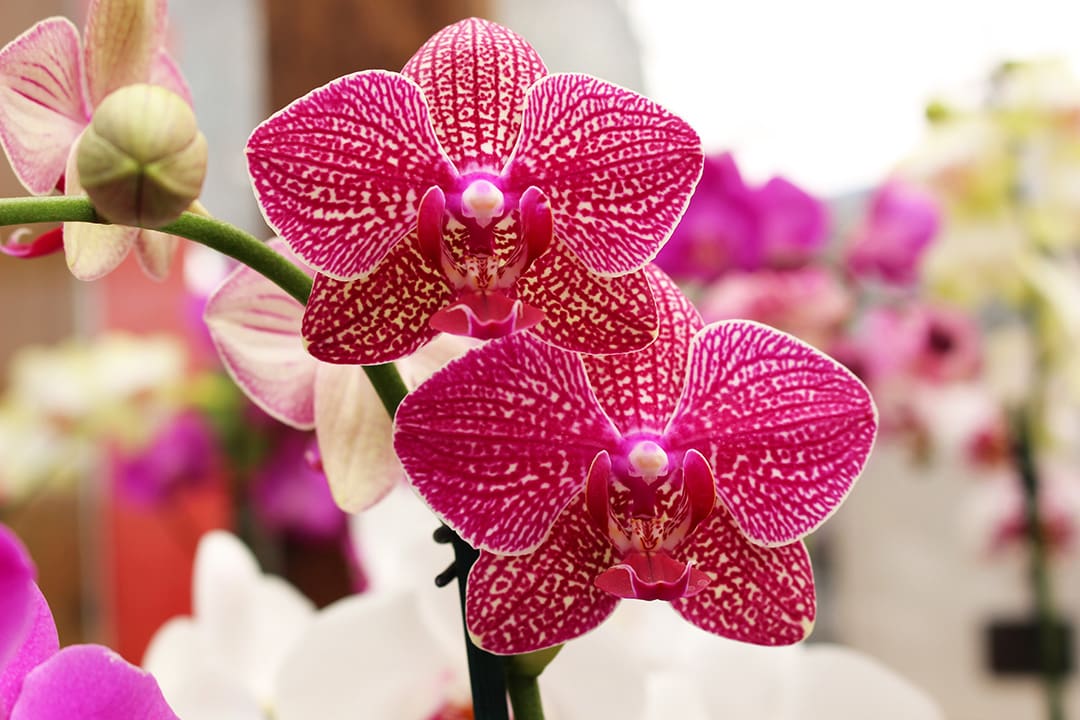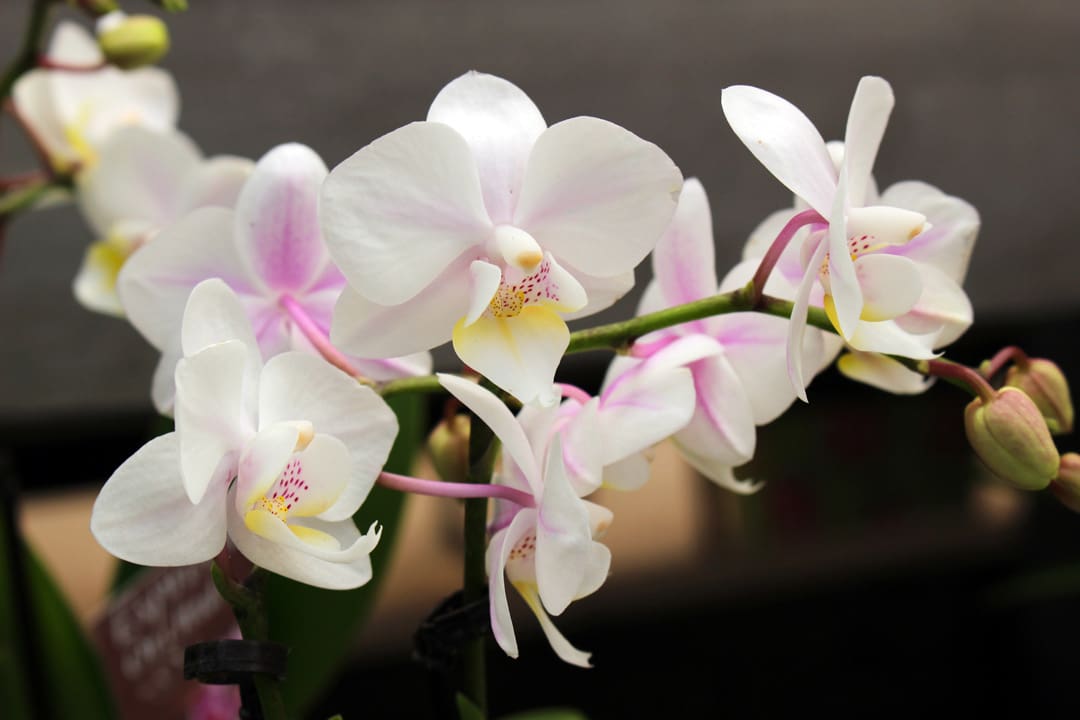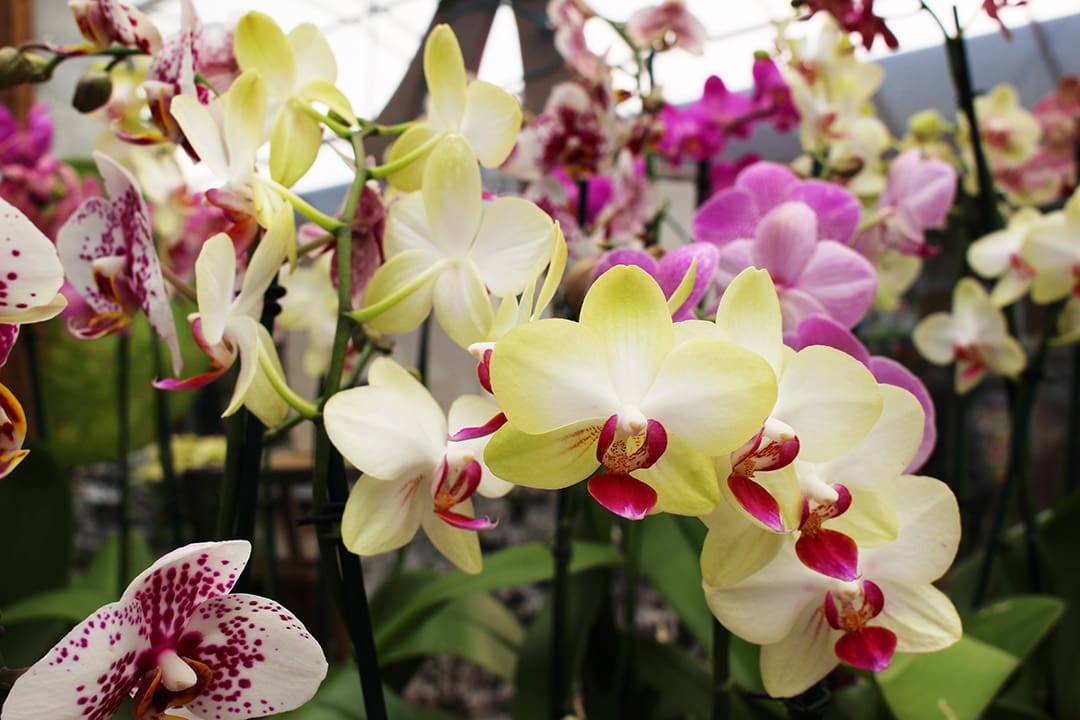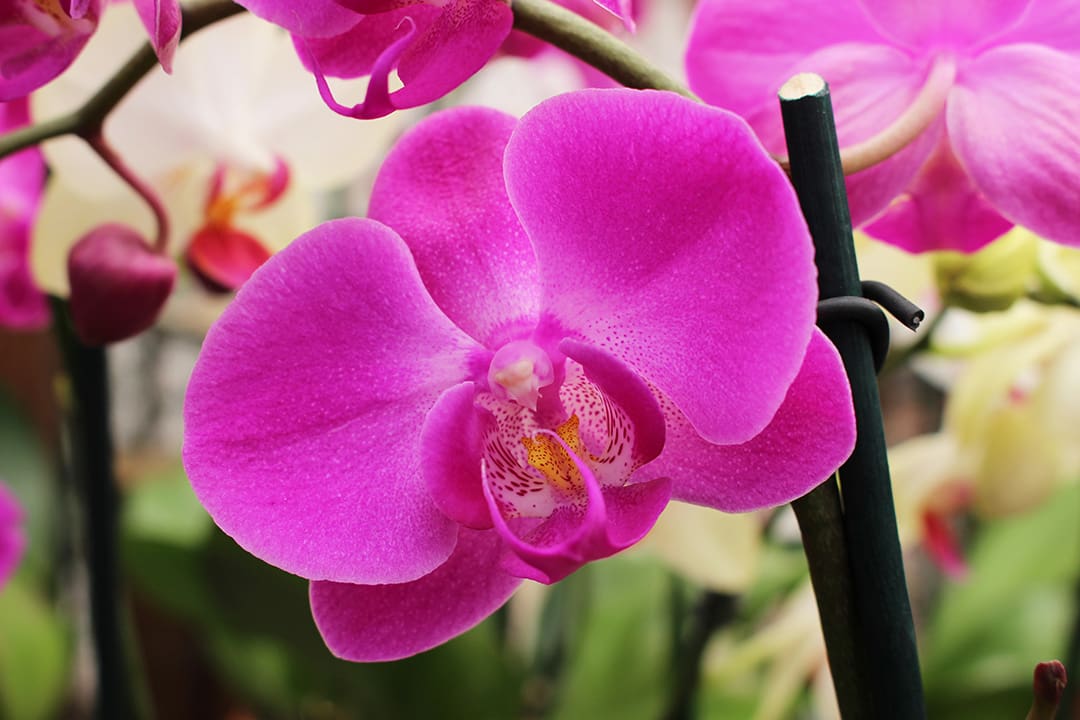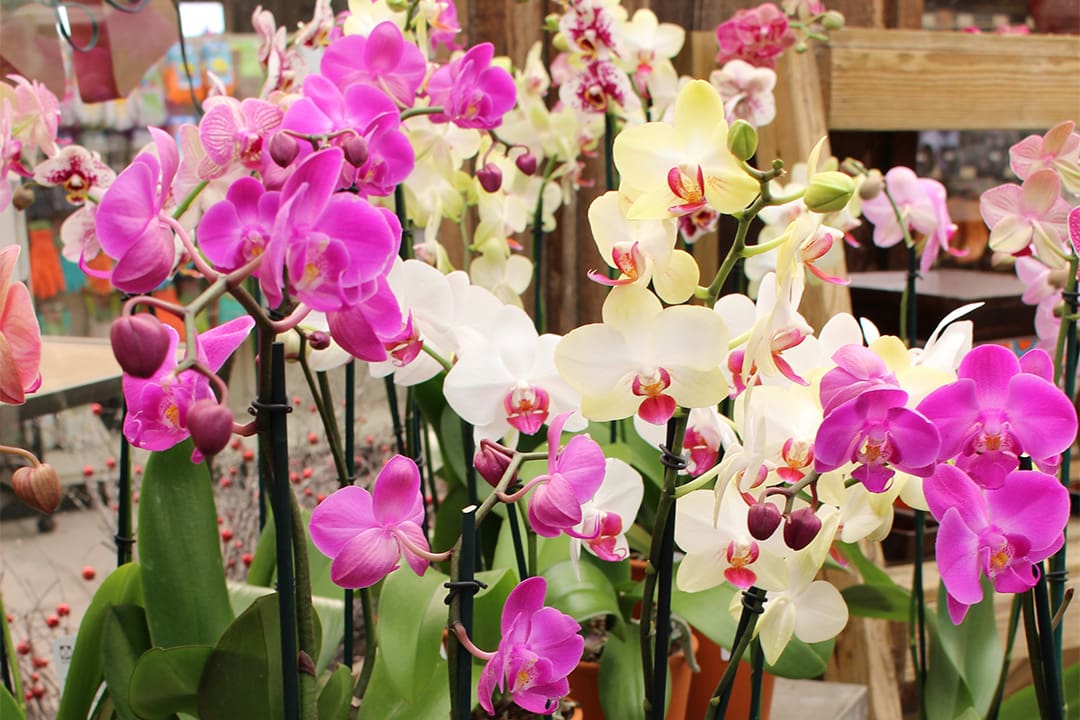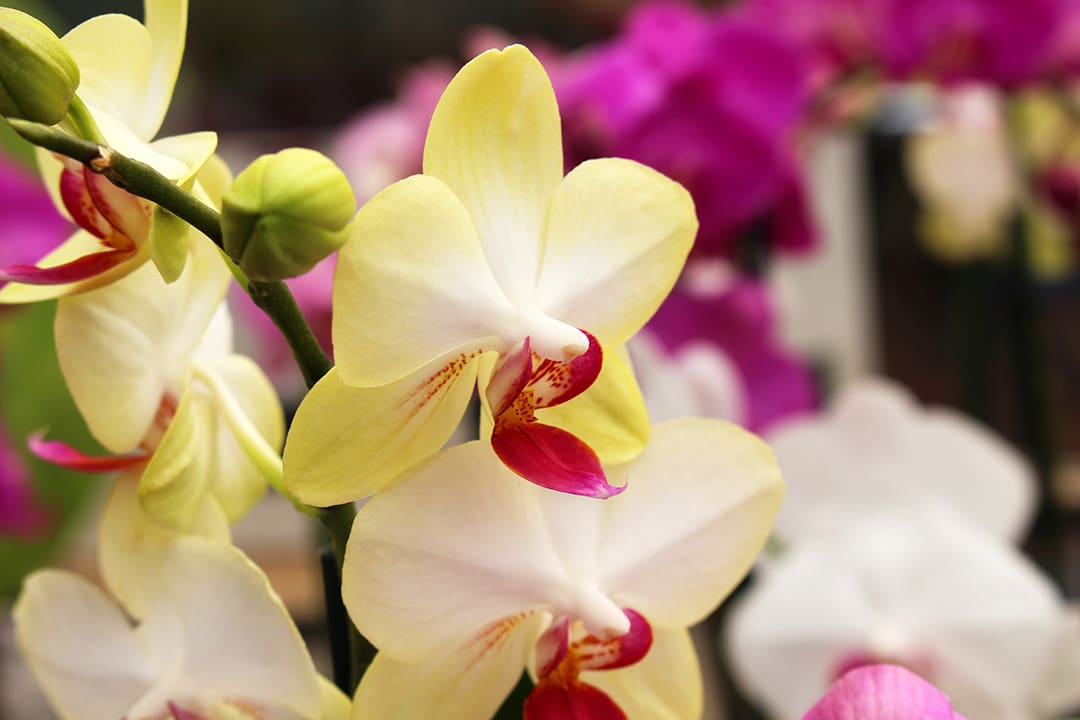Breathtaking Beauty Meets Simplicity
In terms of evolutionary history, orchids are the youngest flowering plants. They are also the largest plant family, with 10,000 to 30,000 species and more than 70,000 hybrids. Most orchids come from Asiatic regions and are most commonly found growing in trees. But a greenhouse or climate-controlled area isn’t required to grow them.
Despite their elegant, graceful appearance, orchids aren’t difficult to care for, and by following a few simple guidelines, many varieties will bloom for you again next year.
Here are some simple care instructions:
- Plants should be checked for water approximately every seven days.
- If the bark is still damp, don’t water and check the plant again in 2-3 days for water needs.
- Water thoroughly, avoiding the leaves.
- Never let your orchid sit in water.
- If your orchid is in moss, be especially careful not to over water.
- After your orchid has finished blooming, for best results, fertilize every two weeks with Bonide Liquid Orchid Food.
- Keep your orchid in a well-ventilated spot with partial shade, away from radiators, air conditioning, and strong drafts.
- Set the planter in a tray of pebbles and water so that the pot sits out of the water. This prevents the roots from rotting and allows the moisture to circulate.
Remember: Plants are like people; they do not always need water at the same time. Check each plant individually for water needs.
Orchids gain their water from the relative humidity in the atmosphere; they do not absorb water in a traditional way from the roots and soil. For stability, orchids are often potted with the roots in a growing media that should not be overly wet.
They also require a period of dormancy during the winter in order to bloom again in the spring, so allow it to rest in a sunny spot, and don’t water it at all during this time. When its blooms are gone, cut the spike an inch above the foliage, leaving the old canes in place.
